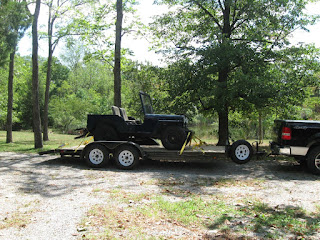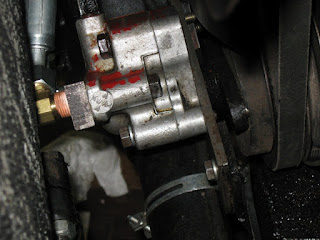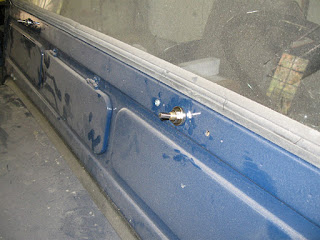Farm Jeep as art? We have always considered the iconic Willys jeep a beautiful piece of metal sculpture. A grill and tailgate are part of our garage art collection. But early last summer, Richard Saxton from the Colorado based arts group M12 (m12studio.org) contacted us at about a real farm jeep arts project. M12 was planning an exhibition with the University of Toledo’s Center for the Visual Arts gallery and had been researching jeeps and their agriculture connections. We were able to provide some names and contact information for some Farm Jeep historians and collectors who contributed materials to the exhibition. A description of the short-term exhibit is here – UT News
John Ittel’s beautiful 1954 CJ3B with a Newgren 3-point hitch is a perfect example of a farm jeep. What made a lovely-to-look-at and interesting exhibit even more special was the opportunity for the students (and the public through pictures) to see the farm jeep in action. Through a tree planting exercise, one can see both the connection to agriculture and the “universal” nature of the jeep.
The pictures (here) show the “universal jeep” as a pickup, hauling the small trees to be planted, a passenger vehicle, hauling students, and as a tractor. As a tractor it carries the implement (in this case an auger powered by the PTO (power take off)) to the field and engages the implement with the ground to create the holes for planting.
 The planting exercise also gave us a chance to discuss some of the reasons why don’t see modern versions of the farm jeep. Evan is showing why the jeep wasn’t favored by farmers as a tractor. His location at the back of the jeep approximates where a farmer would be located while driving a conventional tractor, providing easy visual access to the implement. From the jeep’s driver’s seat, it is much harder to see where the implement is making contact with ground.
The planting exercise also gave us a chance to discuss some of the reasons why don’t see modern versions of the farm jeep. Evan is showing why the jeep wasn’t favored by farmers as a tractor. His location at the back of the jeep approximates where a farmer would be located while driving a conventional tractor, providing easy visual access to the implement. From the jeep’s driver’s seat, it is much harder to see where the implement is making contact with ground.
We enjoyed our visit and discussion with the students and seeing the work of M12 and the CVA Gallery. It did validate what we have believed all along. A farm jeep is really a work of art.

























